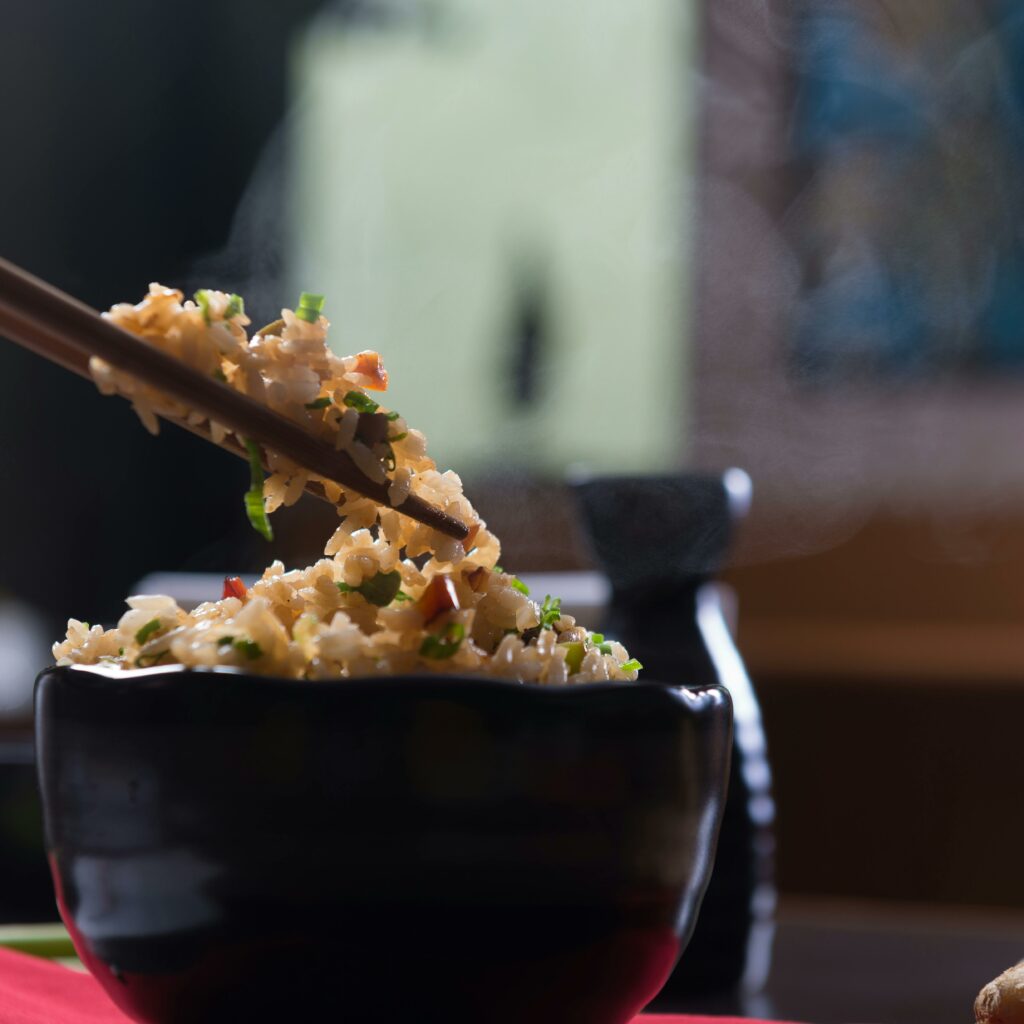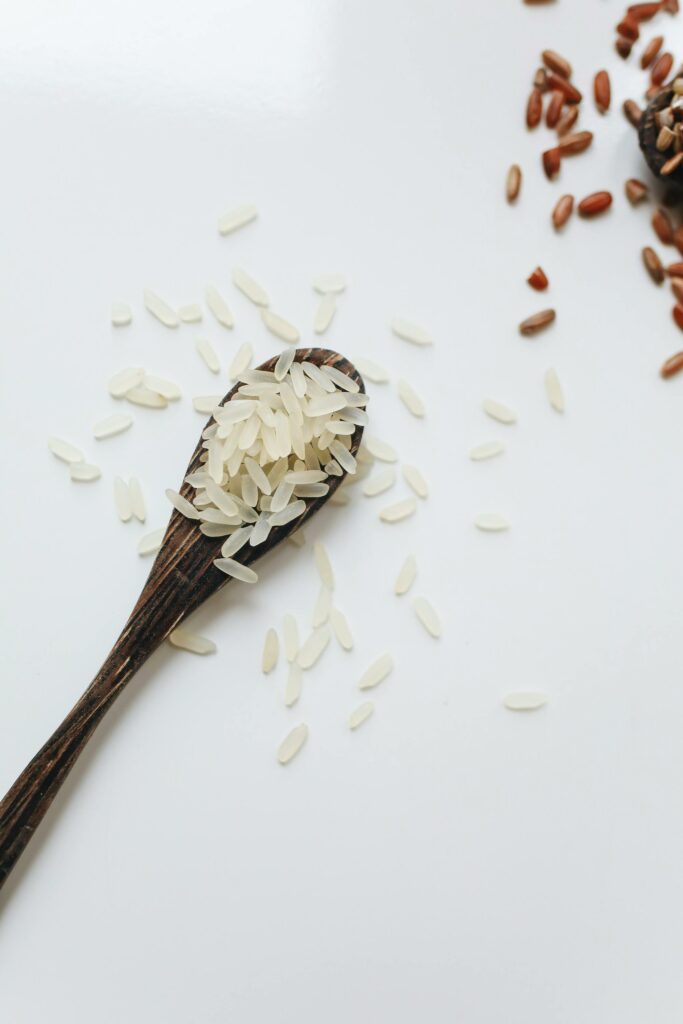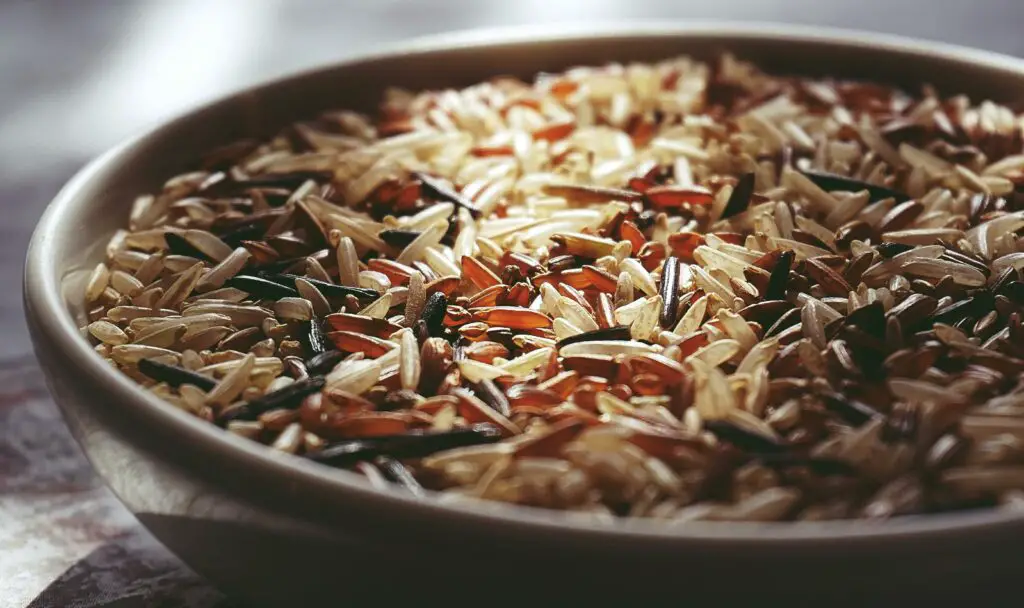Rice is a great source of gut-friendly fiber, complex carbohydrates, and B vitamins. The fiber in brown and wild rice supports digestive health by letting beneficial gut bacteria thrive and multiply. Beyond its nutritional value, rice is incredibly versatile, pairing effortlessly with vegetables and proteins to create a satisfying base for countless meals.
However, much like bread and pasta, rice is often criticized by low-carb enthusiasts. Those who avoid it miss out on its health benefits and its role as a nutritious, adaptable grain enjoyed across cultures. This global staple is loved by billions worldwide for its affordability and cultural importance.
The truth is, however, that as with any food consumed in excess, eating too much rice can have negative effects.
In this article, we’ll explore what happens when you overeat it.
Risk of Type 2 Diabetes and Heart Disease
Eating too much white rice, especially without enough protein, vegetables, or fiber, can cause your blood sugar to spike and may raise the risk of long-term health issues such as type 2 diabetes.
A study by Harvard researchers found that individuals consuming three to four servings of white rice daily were 1.5 times more likely to develop type 2 diabetes compared to those with minimal intake. For each additional large bowl of white rice consumed daily, the risk increased by 10%.
This association was particularly pronounced in Asian populations, who typically consume higher amounts of white rice. The researchers attribute this increased risk to the high glycemic index of white rice, which can cause rapid spikes in blood sugar levels.
They recommend replacing refined carbohydrates like white rice with whole grains to mitigate this risk.
Weight Gain and Belly Fat
Rice gives quick energy because it’s high in simple carbs, but since it’s digested fast, you get hungry again soon. Eating big portions every day can add extra calories, which over time may lead to weight gain and belly fat.
According to a study published in Nature Medicine by the Indian Council of Medical Research (ICMR) and the National Institute of Nutrition (NIN), diets high in refined carbohydrates, such as white rice, combined with low protein intake, significantly elevate the risk of obesity. Individuals consuming the highest levels of carbohydrates had 1.2 times higher odds of obesity compared to those with lower intake.
Arsenic in Rice – A Lesser-Known Danger
Rice can naturally absorb arsenic from the soil and water where it’s grown, and brown rice tends to have higher levels than white rice.
Eating too much rice, especially from areas with contaminated water, can increase arsenic exposure.
The New York Post shares the results of a study by Michigan State University which found that brown rice can have higher levels of arsenic than white rice—about 40% more. The more toxic form, called inorganic arsenic, was also higher. This can be risky, especially for young children who eat a lot of rice, and may affect health over time. Choosing other grains or using certain cooking methods can help reduce exposure.
How to Consume Rice the Healthy Way
Rice can still be part of a balanced diet if consumed the right way.
- Mind your portions: Limit cooked rice to about one cup per meal.
- Add balance: Mix rice with vegetables, lean protein, and healthy fats to slow down sugar absorption.
- Select wisely: Opt for brown rice, red rice, or quinoa for more fiber and nutrients.
- Avoid fried rice: Cooking rice with oil, butter, or sauces adds unnecessary calories.
Please SHARE this article with your family and friends on Facebook.
Bored Daddy
Love and Peace




